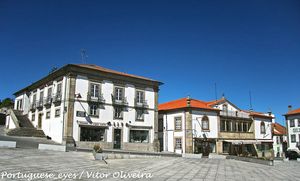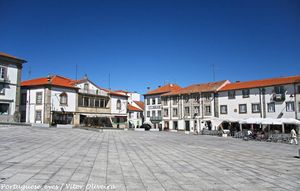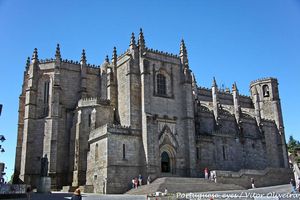
Guarda, Portugal
Discover the city of Guarda and why it is a landmark in Portuguese history?.
Guarda, known for being one of Portugal’s highest cities, had an essential role as stronghold due to its proximity to the border. Nowadays, the city is more sober, yet still an excellent departure point to visit the many medieval cities and fortresses in the whole border with Spain.
Little is left of its once fiery walls. Nowadays, only worn away parts of these can be seen next to the Torre dos Ferreiros tower, some behind the Jewish Quarter, and some more along the Avenida dos Bombeiros Voluntários Egitanienses. The last fragment is located next to the Torre de Menagem (Homage Tower) of Castelo da Guarda Castle (12th and 13th centuries), an addition to the tower itself to defend the gate. The areas known as Porta do Rei and Porta do Erva (gates to the city) also sometimes functioned as walls.
The region where Guarda sits used to be inhabited by Celtiberian peoples, whose remnants can be seen in the nearby mountain of Tintinolho and Rochoso. After being occupied by the Romans, the town of Lancia Oppidana was established, which would be later taken by the Moors.
Under Moorish rule, a citadel was erected on top of the highest hill. It is atop this citadel that the current city lies. In 1384, Castilians were able to take the dwellings outside the walls, but not the citadel itself.
Today, the historical centre of Guarda does hide many medieval remnants due to its isolation up to the 19th century.
The oldest area of the city is the Praça Luís de Camões, a square also known as Praça Velha. Here, you will find many historical references such as a sculpture of King Sancho I, founder of the city and builder of the walls; or the Paços do Concelho, manueline-style building where the Treaty of Tordesillas was signed between Spain and Portugal. The Sé da Guarda (Cathedral) is also here, built in granite and with a fortified overall look.
Other interesting sports to visit are the Guarda Museum, located next to the old Palácio Episcopal (Episcopal Palace) form the 17th century; the Igreja de São Vicente Church, with its magnificient 17th-century tile panels, and the Fonte da Dorna Fountain, preserving fragments of a Roman road.
In the walk between Praça Luís de Camões and the Igreja de São Vicente there are several inexpensive restaurants where excellent dishes from Portugal are served.
One of the most interesting events in Guarda is the Jazz Festival, known as Ciclo Jazz da Guarda, held between March and May with many attractions during the week it lasts.
Mapa Interactivo:
Guarda
What to see:
- Cathedral of Guarda
- Igreja da Misericórdia Church
- Igreja de São Vicente Church
- Torre dos Ferreiros Tower
- Guarda City Museum
- Guarda Castle
- Belmonte Jewish Museum
- Guarda City Theatre
- Trancoso
- Trancoso Castle
- Igreja de Nossa Senhora da Fresta Church
- Igreja de São Pedro Church
- Capela de Santa Luzia Chapel
- Capela de São Bartolomeu Chapel
- Longroiva Castle
- Sortelha
- Zêzere Ecomuseum
- Belmonte Castle
- Torre de Centum Cellas Tower
- Almeida
- Castelo Bom
- Castelo Mendo
Beaches:
Museums:
Other worth-visiting nearby towns and cities:
Why "Portugal Travel"?
Portugal Travel is an organization of Portuguese agencies whose objectives are:
- ✓ To make Portugal, its culture and its heritage known.
- ✓ To promote sustainable tourism.
In collaboration with:
Escola Superior de Hotelaria e Turismo do Estoril
Turismo de Portugal
Copyright PortugalTravel.org © - All rights reserved.






